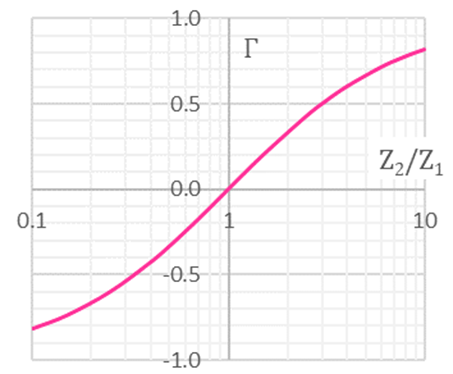Reflection coefficient
|
Ratio of the reflected and transmitted wave to the incident wave are depicted as follows:
where Γ is the reflection coefficient at the boundary between media-1 and 2:
|
We will derive the ratio of the reflected and transmitted wave to incident wave.
***
Let 'a1' be a incident wave, 'b1' be a reflected wave and 'a2' be a transmitted wave.

The voltage and current must be continuous at the boundary.
![]()
![]()
Here note that the sign of backward current is negative.
Eliminating va2, we obtain the ratio of reflected wave to incident wave voltage, which is defined as reflection coefficient Γ.
![]()
Because Z1,Z2 are positive, the magnitude of the reflection coefficient is less than unity.
![]()

The ratio of current is just different from that of voltage in sign.
![]()
Therefore the reflection coefficient of power is:
![]()
Similarly, eliminating vb1, we obtain the ratio of transmitted wave to the incident wave:
![]()
Note that the power flow satisfies the conservation law of energy.

